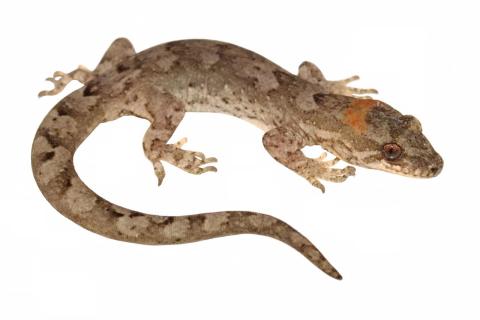Species
Colouration
Distribution
Mouth
Eyes
Feet
Size
Three Kings Gecko - D. ‘Three Kings’
Dorsal surfaces vary from light grey through to dark brown, often with lighter coloured blotching or stripes running the length of the body. May have mustard patch on the nape of the neck. Ventral surfaces are a uniform grey or cream.
Manawatāwhi / Three Kings Islands. North of Cape Reinga.
Mouth and tongue pink.
Shades of orange through to dark brown.
15-16 lamellae.
≤ 100mm SVL.
Te Paki Gecko – D. ‘North Cape’
Dorsal surfaces are typically dark brown, with light grey to light brown blotching or striping running the length of the body. May have mustard patch on the nape of the neck. Ventral surfaces are grey or cream with or without darker speckling.
Seemingly restricted to the northern Aupouri Peninsula, particularly the Te Paki region.
Mouth and tongue pink.
Typically shades of orange, but can range through to dark brown.
10-12 lamellae.
≤ 85mm SVL.
Matapia Gecko - D. ‘Matapia Island’
Dorsal surfaces vary from light grey through to dark brown, often with lighter coloured blotching or stripes running the length of the body. May have mustard or orange patch on the nape of the neck. Ventral surfaces are a uniform grey or cream
Known from North Cape through to the Karikari Peninsula, occupies many of the islands in this region.
Mouth pink, tongue has a dark blackish tip
Shades of orange through to dark brown.
8-15 lamellae.
≤ 60mm SVL
Pacific Gecko - D. pacificus
Dorsal surfaces vary from light grey through to dark brown, and can be yellowish, often with lighter coloured blotching or stripes running the length of the body. May have mustard or orange patch on the nape of the neck. Ventral surfaces are a uniform grey or cream
Upper North Island from at least Whangarei through to the East Cape and Taranaki in the South.
Mouth and tongue pink.
Shades of orange through to dark brown.
10-16 lamellae.
≤ 80mm SVL
Poor Knights Gecko - D. ‘Poor Knights’
Dorsal surfaces vary from light grey through to dark brown, often with lighter coloured blotching or stripes running the length of the body. May have mustard patch on the nape of the neck. Ventral surfaces are a uniform grey or cream
Poor Knights Islands off of eastern Northland.
Mouth and tongue pink.
Shades of orange through to dark brown.
11-16 lamellae.
≤ 95mm SVL
Mokohinau Gecko – D. ’Mokohinaus’
Dorsal surfaces vary from light grey through to dark brown, and can be yellowish, often with lighter coloured blotching or stripes running the length of the body. May have mustard or orange patch on the nape of the neck. Ventral surfaces are grey or cream with or without darker speckling.
The Mokohinau Islands in the outer Hauraki Gulf.
Mouth and tongue pink.
Shades of orange through to dark brown.
10-14 lamellae.
≤ 90mm SVL

